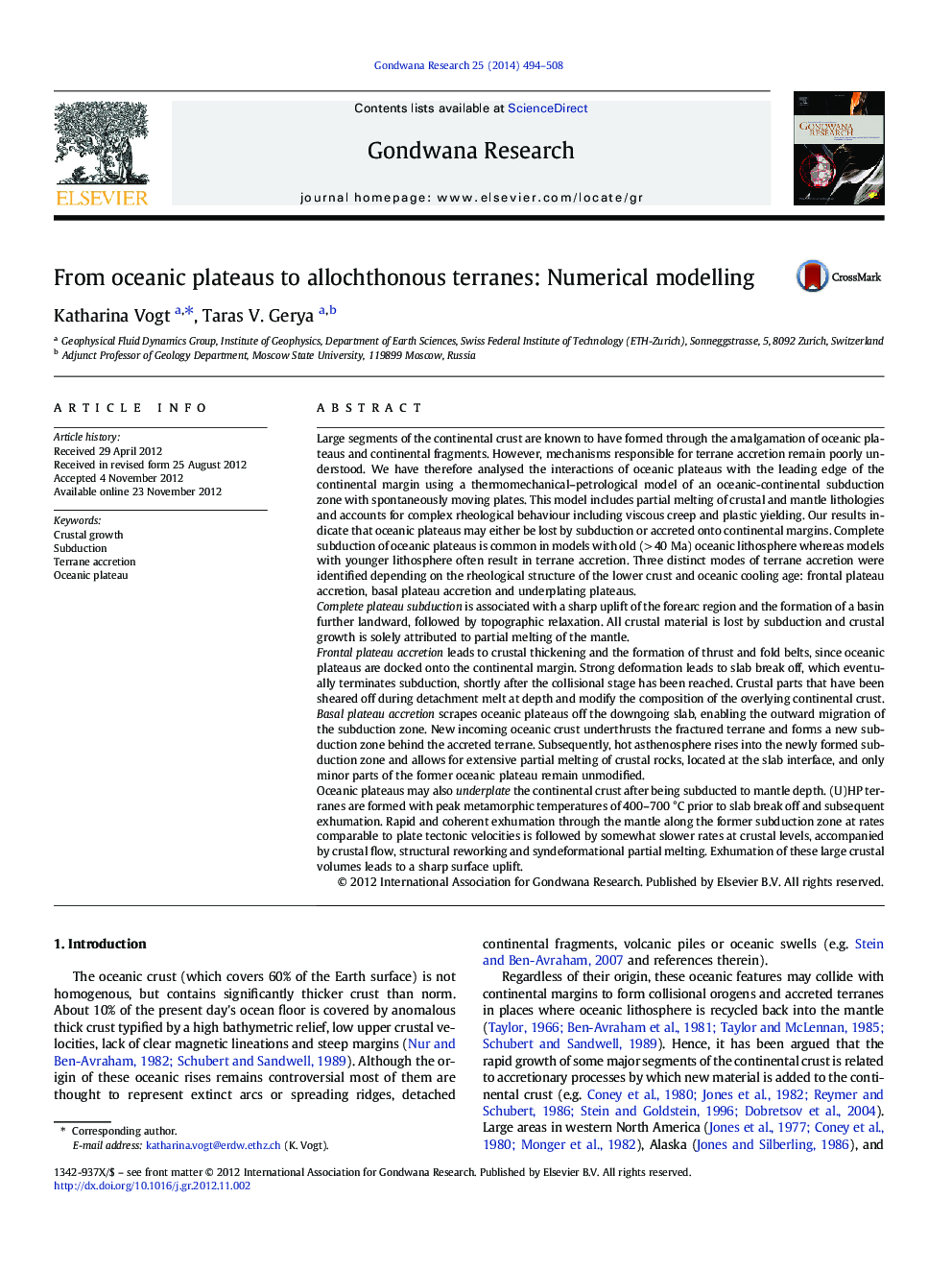| کد مقاله | کد نشریه | سال انتشار | مقاله انگلیسی | نسخه تمام متن |
|---|---|---|---|---|
| 4727085 | 1356360 | 2014 | 15 صفحه PDF | دانلود رایگان |
Large segments of the continental crust are known to have formed through the amalgamation of oceanic plateaus and continental fragments. However, mechanisms responsible for terrane accretion remain poorly understood. We have therefore analysed the interactions of oceanic plateaus with the leading edge of the continental margin using a thermomechanical–petrological model of an oceanic-continental subduction zone with spontaneously moving plates. This model includes partial melting of crustal and mantle lithologies and accounts for complex rheological behaviour including viscous creep and plastic yielding. Our results indicate that oceanic plateaus may either be lost by subduction or accreted onto continental margins. Complete subduction of oceanic plateaus is common in models with old (> 40 Ma) oceanic lithosphere whereas models with younger lithosphere often result in terrane accretion. Three distinct modes of terrane accretion were identified depending on the rheological structure of the lower crust and oceanic cooling age: frontal plateau accretion, basal plateau accretion and underplating plateaus.Complete plateau subduction is associated with a sharp uplift of the forearc region and the formation of a basin further landward, followed by topographic relaxation. All crustal material is lost by subduction and crustal growth is solely attributed to partial melting of the mantle.Frontal plateau accretion leads to crustal thickening and the formation of thrust and fold belts, since oceanic plateaus are docked onto the continental margin. Strong deformation leads to slab break off, which eventually terminates subduction, shortly after the collisional stage has been reached. Crustal parts that have been sheared off during detachment melt at depth and modify the composition of the overlying continental crust.Basal plateau accretion scrapes oceanic plateaus off the downgoing slab, enabling the outward migration of the subduction zone. New incoming oceanic crust underthrusts the fractured terrane and forms a new subduction zone behind the accreted terrane. Subsequently, hot asthenosphere rises into the newly formed subduction zone and allows for extensive partial melting of crustal rocks, located at the slab interface, and only minor parts of the former oceanic plateau remain unmodified.Oceanic plateaus may also underplate the continental crust after being subducted to mantle depth. (U)HP terranes are formed with peak metamorphic temperatures of 400–700 °C prior to slab break off and subsequent exhumation. Rapid and coherent exhumation through the mantle along the former subduction zone at rates comparable to plate tectonic velocities is followed by somewhat slower rates at crustal levels, accompanied by crustal flow, structural reworking and syndeformational partial melting. Exhumation of these large crustal volumes leads to a sharp surface uplift.
Figure optionsDownload as PowerPoint slideHighlights
► We model oceanic plateau subduction and accretion at active continental margins.
► Oceanic plateaus may either be lost by subduction or accreted onto continental crust.
► Three modes of terrane accretion were identified: frontal plateau accretion, basal plateau accretion and underplating plateaus.
Journal: Gondwana Research - Volume 25, Issue 2, March 2014, Pages 494–508
